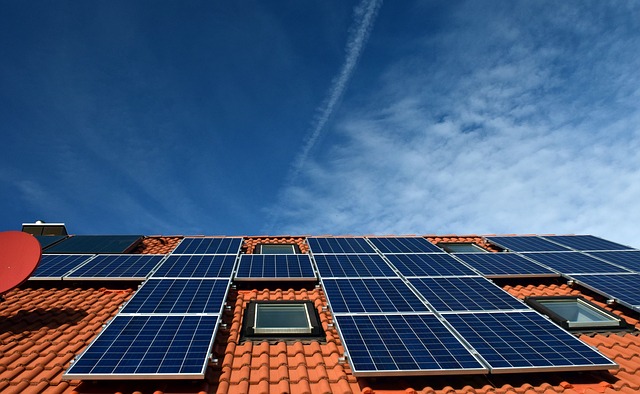Have you ever wondered what it takes to generate 1 gigawatt (GW) of power? To put it into perspective, 1 GW can power around 750,000 homes. Now, imagine harnessing that immense energy using solar power—clean, renewable, and sustainable. If you’re a renewable energy enthusiast, a homeowner exploring solar options, or someone intrigued by large-scale energy solutions, Factorio Solar Panels might just be the answer you’re looking for. These panels are not only highly efficient but also ideal for ambitious projects like generating 1 GW of energy.

In this guide, we’ll walk you through everything you need to know about setting up Factorio Solar Panels to achieve 1 GW of power. From understanding their benefits to step-by-step installation tips and real-world examples, this article will equip you with the knowledge to embark on your green energy journey. Let’s dive in!
Why Solar Panels Are the Future of Green Energy
Solar panels have revolutionized the way we think about energy. Unlike traditional fossil fuels, solar power relies on the sun’s limitless energy, making it a clean and sustainable alternative. For homeowners and businesses, switching to solar offers numerous advantages, including lower energy bills, a reduced carbon footprint, and potential tax incentives.
But what truly sets solar energy apart is its scalability. Whether you’re powering a small home or aiming for a massive 1-GW system to support industrial operations, solar panels can be tailored to meet your needs. Factorio Solar Panels, in particular, stand out for their efficiency and adaptability, making them a top choice for large-scale energy projects.
Why Aim for 1 GW of Solar Power?
You might be wondering, why focus on 1 GW? Here’s why this milestone is worth pursuing:
- Massive Energy Output: 1 GW can power entire communities, industrial complexes, or even future-proof your energy needs for decades.
- Environmental Impact: Replacing 1 GW of fossil fuel-based energy with solar power can eliminate millions of tons of CO2 emissions annually.
- Economic Benefits: Large-scale solar installations often come with long-term savings, and excess energy can be sold back to the grid for additional income.
Whether you’re planning a community project or simply exploring the possibilities of renewable energy, achieving 1 GW with Factorio Solar Panels is a remarkable goal.
What Sets Factorio Solar Panels Apart?
Factorio Solar Panels are a favorite among renewable energy enthusiasts for several reasons:
- High Efficiency: These panels are designed to maximize sunlight-to-electricity conversion, ensuring optimal energy output.
- Modular Design: Their scalable structure allows you to start small and expand over time, making them perfect for large projects.
- Durability: Built to withstand harsh weather conditions, Factorio panels offer long-lasting performance.
- Seamless Integration: They work effortlessly with energy storage systems, enabling you to create a reliable and balanced power grid.
These features make Factorio Solar Panels an excellent choice for anyone aiming to generate 1 GW of clean energy.
Step-by-Step Guide to Setting Up 1 GW of Factorio Solar Panels
Setting up a 1-GW solar system may seem daunting, but with the right approach, it’s entirely achievable. Here’s how to get started:
- Assess Space Requirements
A 1-GW system requires significant space—approximately 5,000 acres of land or an equivalent rooftop area. Proper planning ensures maximum efficiency and minimal wasted energy. - Design the Solar Array Layout
Use solar design software to determine the optimal panel orientation, tilt angle, and spacing. For example, in the Northern Hemisphere, south-facing panels at a 30-degree tilt often yield the best results. - Install in Phases
Break the project into smaller sections, such as 100-MW blocks. This approach simplifies installation, maintenance, and troubleshooting. - Incorporate Energy Storage
Pair your solar panels with high-capacity batteries, such as lithium iron phosphate (LFP) models, to store excess energy for use during cloudy days or nighttime. - Implement a Smart Energy Management System
Use monitoring tools to track energy production, optimize usage, and identify any inefficiencies in real time. - Schedule Regular Maintenance
Keep your panels clean and inspect them regularly to ensure they operate at peak efficiency.
The Benefits of Generating 1 GW with Solar Power
- Environmental Impact: By replacing fossil fuels with solar energy, you’ll significantly reduce greenhouse gas emissions.
- Cost Savings: Over time, the savings on energy bills and potential income from selling excess power can offset the initial investment.
- Energy Independence: With reliable storage solutions, you’ll have a consistent power supply, even during outages or adverse weather conditions.
Overcoming Challenges in Scaling to 1 GW
While the benefits are clear, scaling to 1 GW does come with challenges. Here’s how to tackle them:
- High Upfront Costs: Seek government incentives, tax credits, or partnerships to share the financial burden.
- Space Limitations: Consider innovative solutions like floating solar farms or vertical installations to maximize land use.
Real-World Examples of 1 GW Solar Projects
- Singapore’s Jurong Island Floating Solar Farm: This innovative project generates over 1 GW of energy while minimizing land use.
- Tesla’s Solar Installations in Nevada: These large-scale projects demonstrate how solar energy can be both scalable and profitable.
Join the Renewable Energy Revolution
Generating 1 GW of solar power is an ambitious yet achievable goal. With Factorio Solar Panels, you can harness the sun’s energy to create a sustainable future while reaping economic and environmental benefits. Start by assessing your energy needs, planning your setup, and consulting with renewable energy experts to bring your vision to life.
FAQ
Q1. Is a 1-GW solar system expensive to set up?
While the initial investment is substantial, government incentives and long-term savings can make it financially viable.
Q2. What happens during cloudy days or at night?
Energy storage systems, such as batteries, ensure a continuous power supply even when the sun isn’t shining.
Q3. Can I sell excess solar energy?
Yes, many regions allow you to sell surplus electricity back to the grid, creating an additional revenue stream.